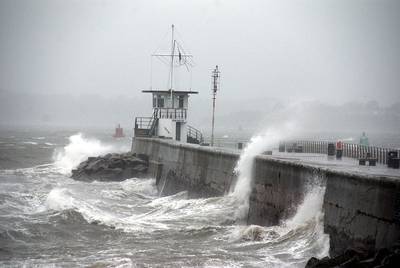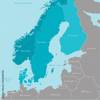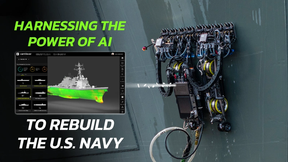Charterer Pays Heavily for Breaching 'Safe Port' Warranty
Charterer incurs US$138-million liability by breach of 'safe port' warranty in the 'Ocean Victory' case. Alistair Feeney, partner of London law firm Holman, Fenwick & Willan LLP gives valuable insights via London P&I Club news.
The recent decision of the Commercial Court in Gard Marine & Energy Ltd v China National Chartering Co Ltd (The Ocean Victory) [2013] EWHC 2199 (Comm) serves as a useful reminder of how far charterers' warranties of port safety extend, and the size of the liabilities that may result when such warranties are breached.
Warranties of port safety are most typically thought of as appearing in time charters, with charterers warranting to owners that they will direct the vessel only to safe ports, berths and anchorages. They also appear in voyage charters, particularly where there are ranges of possible loading or discharge ports.
Ocean Victory
Ocean Victory was a Capesize bulk carrier on 10-year bareboat charter from Ocean Victory Maritime Inc. to Ocean Line Holdings Ltd. The charter provided that the vessel was to be employed "between good and safe ports". The bareboat charterer, Ocean Line Holdings Ltd, time chartered the vessel to Sinochart, who agreed to employ her "via safe anchorage(s), safe berth(s), safe port(s)". Sinochart sub-chartered the vessel to Daiichi for a trip time charter "via safe port(s) safe anchorages(s) South Africa".
On 24 October 2006, while trying to leave the Japanese port of Kashima in a severe gale, part-laden with an iron ore cargo, the vessel encountered force 9 winds and heavy swell. The vessel was set down on the end of a breakwater and then driven aground, before breaking up.
The issues
The claimants, who were hull underwriters suing as assignees of the registered owner and bareboat charterer, submitted that Kashima was an unsafe port. Charterers, Daiichi and Sinochart, submitted that Kashima was not unsafe, and, even if it was, that the casualty was caused by negligence of the master in leaving the port when he did and/or by negligent navigation. Charterers argued that Kashima could not described as unsafe simply because its systems did not guard against every conceivable hazard, and that the pertinent consideration as whether there had been a reasonable level of safety. They pointed out that no vessel had ever before been trapped by a combination of wind and swell in the way that happened to Ocean Victory.
Court findings:
The Court found that Kashima had been unsafe for the vessel. The judge held that the storm that affected the port on 24 October 2006 was not abnormal, because an abnormal occurrence was one that was unrelated to the prevailing characteristics of the port. The judge found that the danger facing Ocean Victory related to two prevailing characteristics of Kashima: the vulnerability of the berth to long swell; and the vulnerability of the Kashima Fairway to northerly gales caused by a local depression. The judge accepted that it might be rare event for those two events to occur simultaneously, but observed that it could not be a surprise if they did so, and that in any event the key point was that they flowed from features of the port.
The Ocean Victory decision underlines the strictness and extent of warranties of port safety. It may on a first reading appear surprising that the Court accepted the conditions at Kashima on 26 October 2006 were rare but then concluded that they were not abnormal. The concept of abnormality is of course often used to describe events that are rare or out of the ordinary. That is not however how it is used in unsafe port cases. The judge in the Ocean Victory was following statements of principle expressed in Wilford on Time Charters (6th edn.) to the effect that an abnormal occurrence was one "which is unrelated to the prevailing characteristics of the port" and that "a port will be unsafe only if the danger flows from its own qualities or attributes". Those statements are derived from various authorities.
Alistair Feeney's account of the case in more detail at: http://www.ukpandi.com/knowledge/article/charterer-incurs-138-million-liability-by-breach-of-safe-port-warranty-the-ocean-victory-case-74235/













